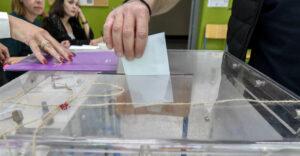The burning of a Christmas tree near Hama has sparked protests across Syria, with thousands taking to the streets to demand protection for religious minorities from the country’s new rulers.
Syria is home to a diverse array of ethnic and religious groups, including Kurds, Armenians, Assyrians, Christians, Druze, Alawite Shias, and Sunni Arabs, the latter forming the majority of the Muslim population.
A video circulating online shows masked gunmen setting fire to the Christmas tree in the central square of a predominantly Christian town. Hayat Tahrir al-Sham (HTS), which recently took control from Bashar al-Assad, announced that the perpetrators were foreign fighters who have since been arrested. The group also pledged to repair the damaged tree promptly.
In Kassa, a neighborhood of Damascus, protesters—some holding Byzantine flags—chanted slogans against foreign fighters, shouting, “Syria is free, non-Syrians must leave.” Meanwhile, in the Bab Touma neighborhood, other demonstrators carried crosses and Syrian flags, chanting, “We will sacrifice our souls for our cross.”
The protests reflect growing frustration and concern among Syrians about the presence of foreign fighters and their impact on religious and cultural harmony in the country. These demonstrations follow the recent burning of a Christmas tree near Hama, which has intensified calls for protecting the rights and safety of religious minorities.
It remains unclear how Hayat Tahrir al-Sham (HTS) plans to govern Syria following its rise to power. The group, which has a jihadist past from which it has distanced itself, now identifies with an Islamist present.
HTS representatives have stated that the rights and freedoms of religious and ethnic minorities will be safeguarded under their rule. However, skepticism remains among many Syrians and international observers, given the group’s history and the complex dynamics of the country’s diverse population.
Ask me anything
Explore related questions





